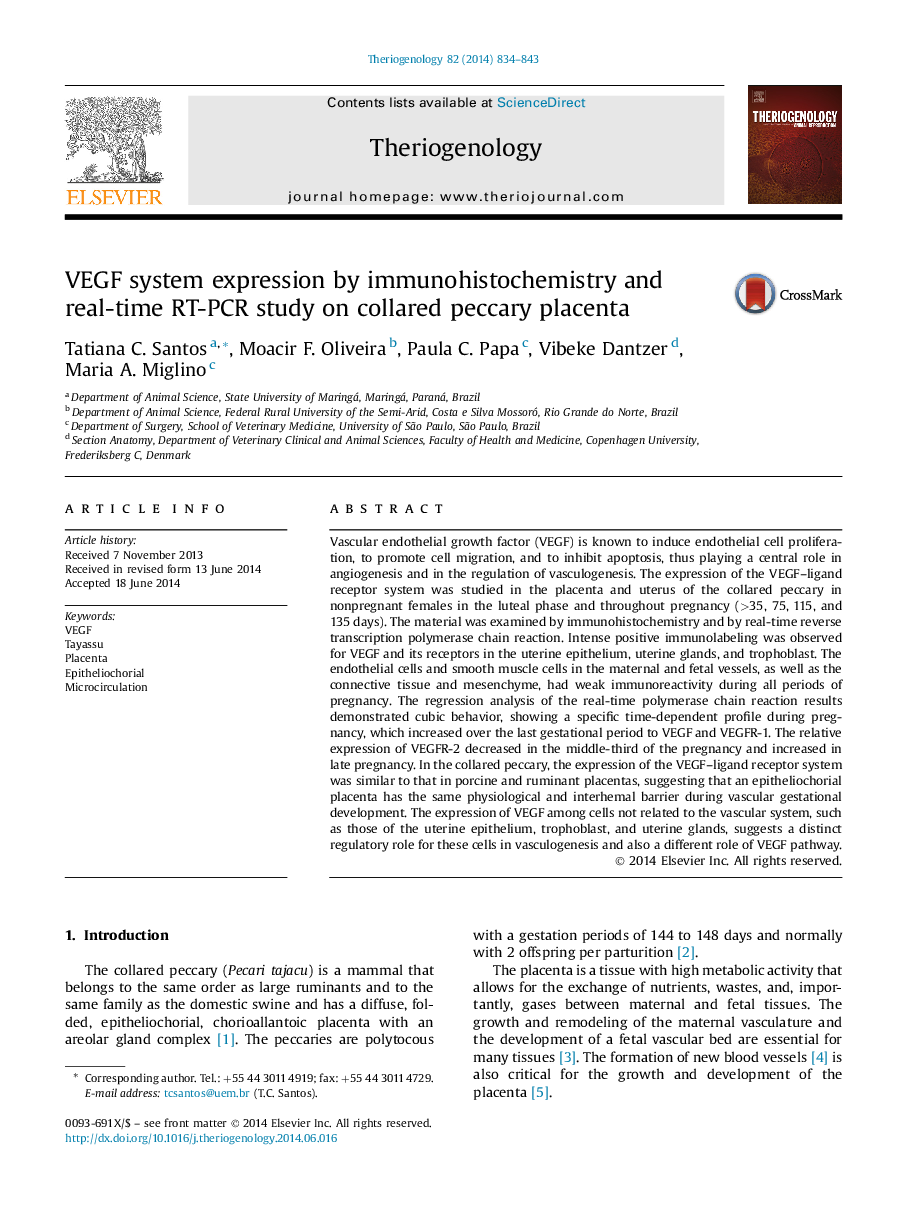| Article ID | Journal | Published Year | Pages | File Type |
|---|---|---|---|---|
| 2095060 | Theriogenology | 2014 | 10 Pages |
Vascular endothelial growth factor (VEGF) is known to induce endothelial cell proliferation, to promote cell migration, and to inhibit apoptosis, thus playing a central role in angiogenesis and in the regulation of vasculogenesis. The expression of the VEGF–ligand receptor system was studied in the placenta and uterus of the collared peccary in nonpregnant females in the luteal phase and throughout pregnancy (>35, 75, 115, and 135 days). The material was examined by immunohistochemistry and by real-time reverse transcription polymerase chain reaction. Intense positive immunolabeling was observed for VEGF and its receptors in the uterine epithelium, uterine glands, and trophoblast. The endothelial cells and smooth muscle cells in the maternal and fetal vessels, as well as the connective tissue and mesenchyme, had weak immunoreactivity during all periods of pregnancy. The regression analysis of the real-time polymerase chain reaction results demonstrated cubic behavior, showing a specific time-dependent profile during pregnancy, which increased over the last gestational period to VEGF and VEGFR-1. The relative expression of VEGFR-2 decreased in the middle-third of the pregnancy and increased in late pregnancy. In the collared peccary, the expression of the VEGF–ligand receptor system was similar to that in porcine and ruminant placentas, suggesting that an epitheliochorial placenta has the same physiological and interhemal barrier during vascular gestational development. The expression of VEGF among cells not related to the vascular system, such as those of the uterine epithelium, trophoblast, and uterine glands, suggests a distinct regulatory role for these cells in vasculogenesis and also a different role of VEGF pathway.
